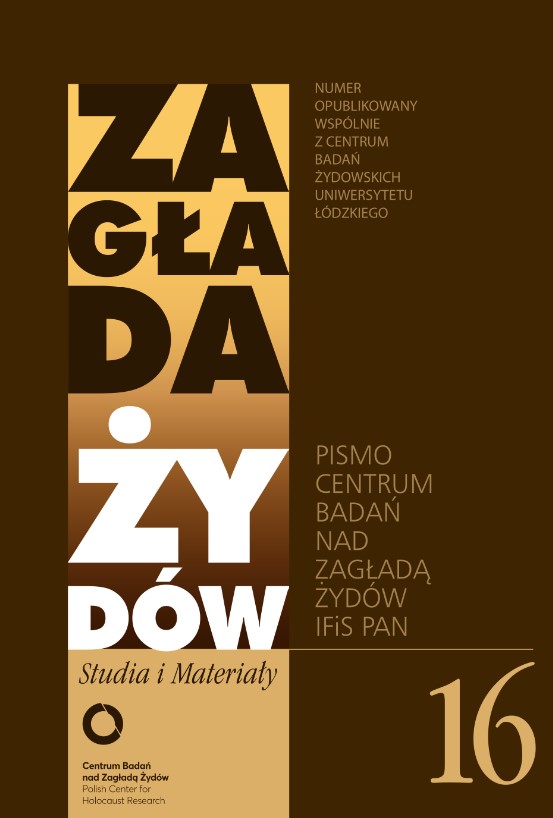Getto łódzkie we współczesnej literaturze dla dzieci i młodzieży. Krytyka „nowej wrażliwości"
The Łódź Ghetto in Contemporary Literature for Children and Young People. Critique of ‘New Sensitivity’
Author(s): Marta TomczokSubject(s): Polish Literature, WW II and following years (1940 - 1949), History of the Holocaust, History of Antisemitism, Theory of Literature
Published by: Stowarzyszenie Centrum Badań nad Zagładą Żydów & IFiS PAN
Keywords: Holocaust literature for children and young people; Łódź ghetto; new sensitivity; new humanities; postmemory; Holocaust kitsch;
Summary/Abstract: This article is a critique of the phenomenon of Holocaust literature for children and young people from the perspective of ‘new sensitivity’. It is a category which sets the direction of thinking in anthropological-cultural studies inspired by the new humanities. Its essence is letting previously marginalized subjects (children, animals, plants, inanimate objects, that is ‘other’ subjects) speak and restoring their agency. Analyzing two examples of contemporary literature on the Litzmannstadt Ghetto (Joanna Fabicka’s Rutka, and Maciej Świerkocki and Mariusz Sołtysik’s Naród zatracenia [nation of doom]), the author proves that despite turning inanimate objects or animals into literary characters this literature has proved unable to face the Holocaust experience and that the forms of narration it generates do not fully capture the complex history of thousands of Jewish children. Many of them involve abuses in the formal sense (‘imitations’ of personal document literature) and, in the emotional sense, preying upon the vulnerable figure of the child (that is prone to being hurt again) and the historical atrocities it suffered. An important part of the article is an analysis of selected examples of the Holocaust kitsch connected with the subject matter of the child and the Holocaust, including interpretations of the depictions of the great blockade (Ger. – Sperre, Pol. – szpera) (in novels by Leslie Epstein, Steve Sem-Sandberg, Fabicka, Świerkocki, and Sołtysik), which are of key importance in maintaining appropriateness by works about the Holocaust addressed to the young reader. Basing on the conclusions made by Barbara Engelking, Joanna Tokarska-Bakir, Susan Rubin Suleiman, Jacek Leociak, and Boris Cyrulnik, the author concludes that postmemory proves particularly harmful in generation of narrations of this type.
Journal: Zagłada Żydów. Studia i Materiały
- Issue Year: 2020
- Issue No: 16
- Page Range: 665-684
- Page Count: 20
- Language: Polish

